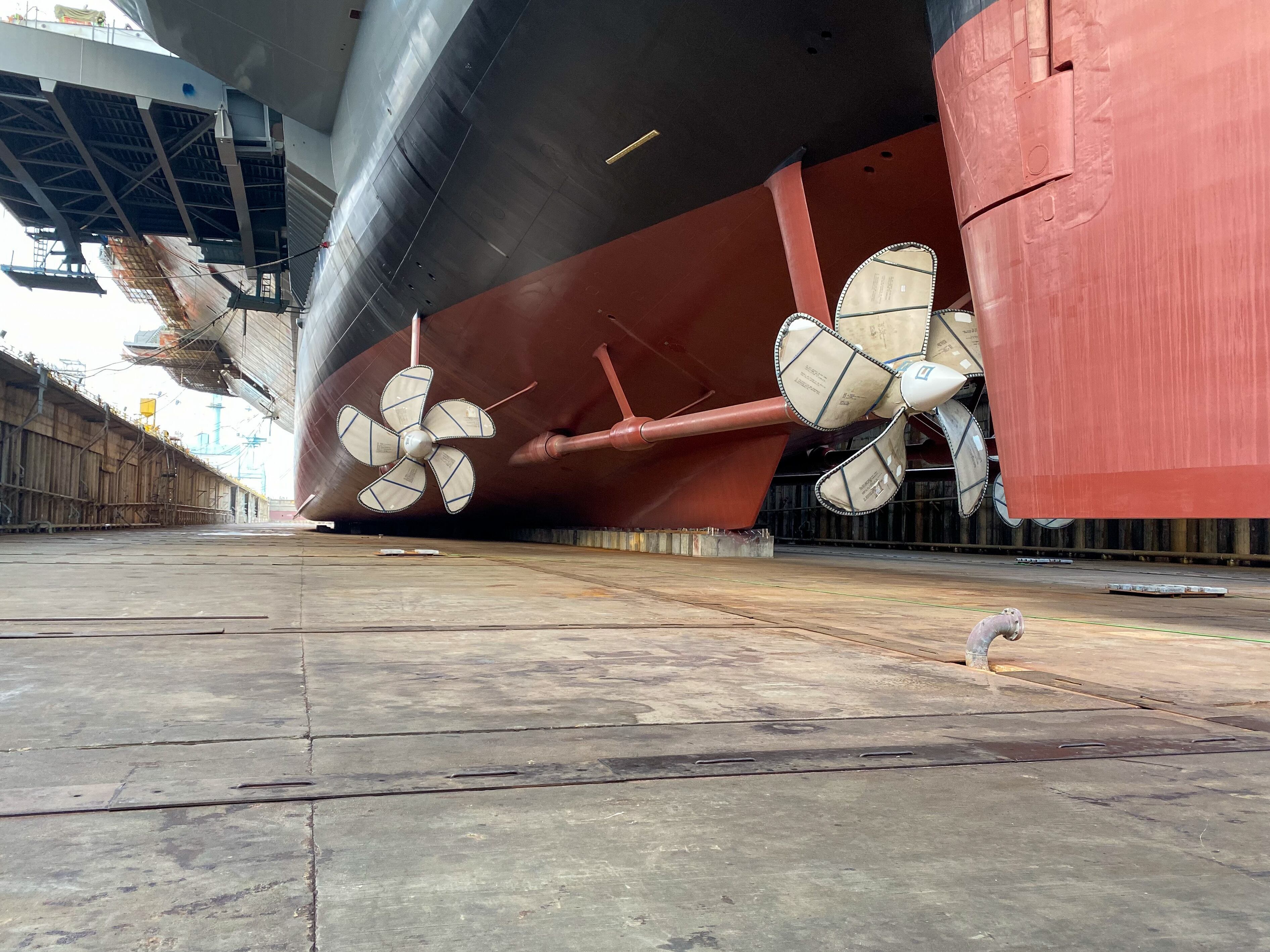WASHINGTON — The advanced arresting gear being installed on the U.S. Navy’s Ford-class aircraft carrier simulated the high operations tempo in October expected during operations, contractor General Atomics announced Friday.
At the testing site in Lakehurst, New Jersey, General Atomics arrested five F/A-18 E/F Super Hornets over two days, landing a jet every minute.
“Over and over again, in rapid succession, Advanced Arresting Gear sustained an aircraft arrestment rate of nearly one per minute, successfully testing the system’s capability to handle the recovery sequence required for combat readiness,” Scott Forney, president of the company’s Electromagnetic Systems Group, said in a release.
RELATED

“Arresting aircraft at a high rate over a sustained period on the same wire is an aggressive test and shows the ability of the system to withstand extreme conditions," he added. “The Ford has the capability for an even higher operational tempo than demonstrated at the test site because it has three wires and clears aircraft from the flight path more efficiently.”
The system is identical to the one installed on Ford, the release said.
The system is one of the many new technologies installed in the Ford class, and has been one of the most irksome for the Navy. The idea behind the advanced arresting gear and the electromagnetic launch system destined for Ford is to allow it to launch and recover more aircraft and put less strain on the aircraft than the old steam catapults on all other carriers.
But the advanced arresting gear, or AAG, system has been dogged by reliability issues. In its report on Navy systems in 2017, the Defense Department’s test and evaluation office said the program had yet to clear up an alarmingly high fault rate that raised questions about whether the Ford would ever be able to generate the promised higher sortie rate that is one of the reasons the program exists in the first place.
In the release, Forney said the company continues to work through reliability issues and will get a good opportunity to do so when Ford gets underway in 2020.
“We look forward to CVN 78 getting back out to sea in early 2020 to conduct more robust flight operations,” Forney said. “We anticipate executing significantly more sorties during this phase, utilizing both jet and prop aircraft. AAG works as intended, and we will continue to collaborate with the Navy to ensure system readiness and reliability to meet operational objectives.”
David B. Larter was the naval warfare reporter for Defense News.







